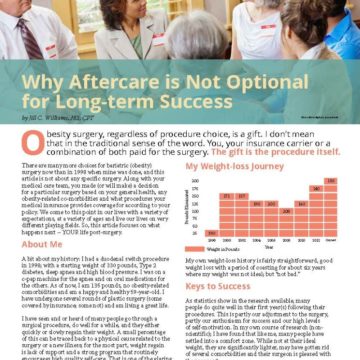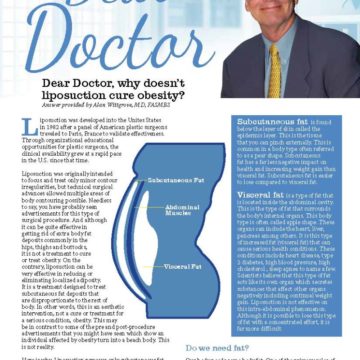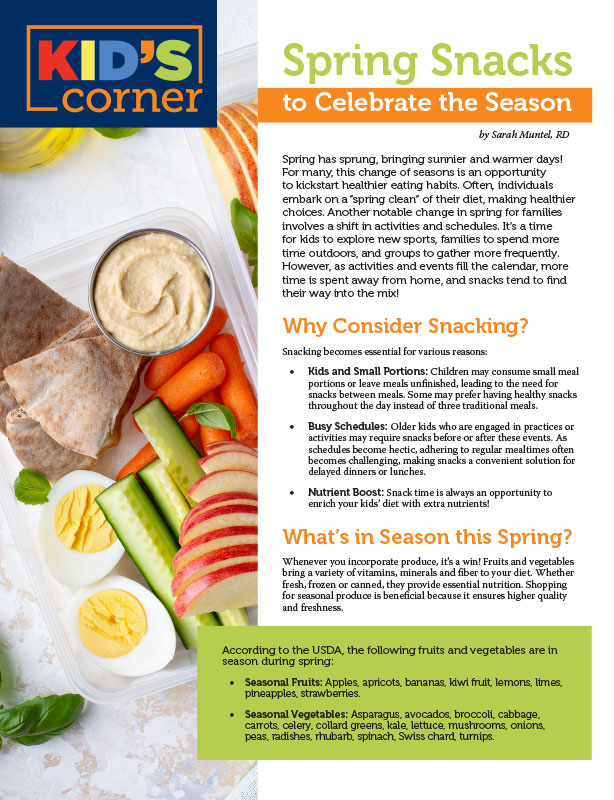Seeing Beyond the Calories

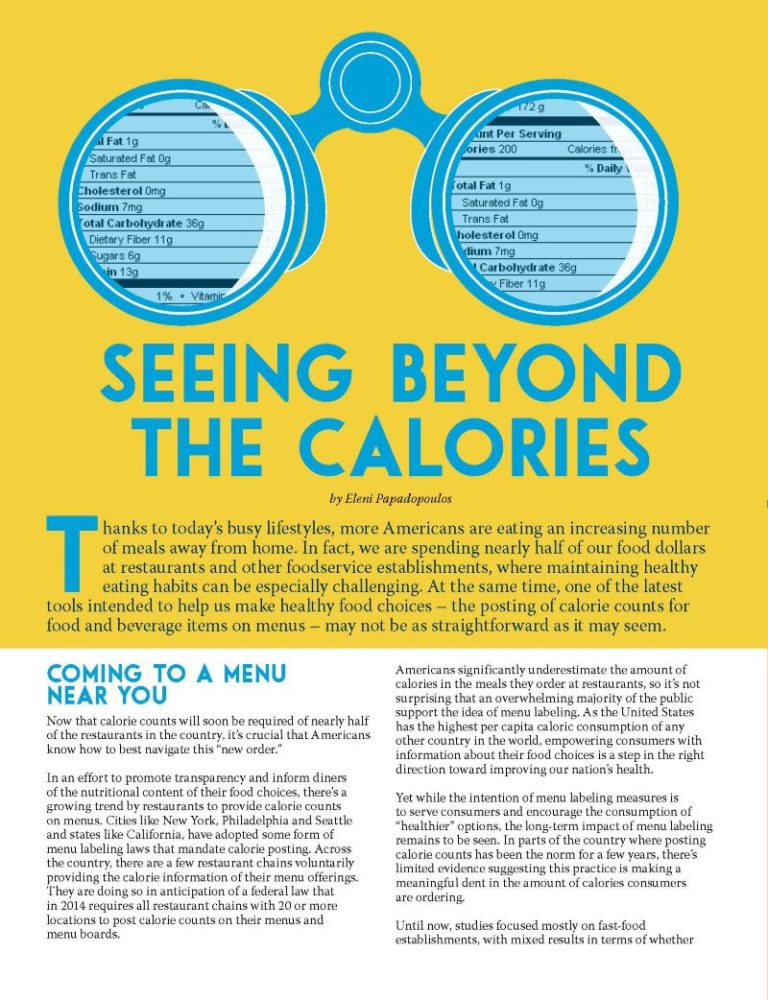
by Eleni Papadopoulos
Winter 2014
Thanks to today’s busy lifestyles, more Americans are eating an increasing number of meals away from home. In fact, we are spending nearly half of our food dollars at restaurants and other foodservice establishments, where maintaining healthy eating habits can be especially challenging. At the same time, one of the latest tools intended to help us make healthy food choices – the posting of calorie counts for food and beverage items on menus – may not be as straightforward as it may seem.
Coming to a Menu near You
Now that calorie counts will soon be required of nearly half of the restaurants in the country, it’s crucial that Americans know how to best navigate this “new order.”
In an effort to promote transparency and inform diners of the nutritional content of their food choices, there’s a growing trend by restaurants to provide calorie counts on menus. Cities like New York, Philadelphia and Seattle and states like California, have adopted some form of menu labeling laws that mandate calorie posting. Across the country, there are a few restaurant chains voluntarily providing the calorie information of their menu offerings. They are doing so in anticipation of a federal law that in 2014 requires all restaurant chains with 20 or more locations to post calorie counts on their menus and menu boards.
Americans significantly underestimate the amount of calories in the meals they order at restaurants, so it’s not surprising that an overwhelming majority of the public support the idea of menu labeling. As the United States has the highest per capita caloric consumption of any other country in the world, empowering consumers with information about their food choices is a step in the right direction toward improving our nation’s health.
Yet while the intention of menu labeling measures is to serve consumers and encourage the consumption of “healthier” options, the long-term impact of menu labeling remains to be seen. In parts of the country where posting calorie counts has been the norm for a few years, there’s limited evidence suggesting this practice is making a meaningful dent in the amount of calories consumers are ordering.
Until now, studies focused mostly on fast-food establishments, with mixed results in terms of whether or not menu labeling influences the amount of calories ordered. Recent studies indicate calorie posting may be more effective among women than men and on food orders rather than beverages choices.
Calorie Labels Fall Short
When it comes to nutrition, however, calorie counts may not tell the whole story. Oftentimes, these counts are not an accurate barometer for the healthfulness of a meal. For example, two meals with the exact same calorie counts can have different nutritional content. More importantly, these two meals can have drastically different levels of processed and artificial ingredients.
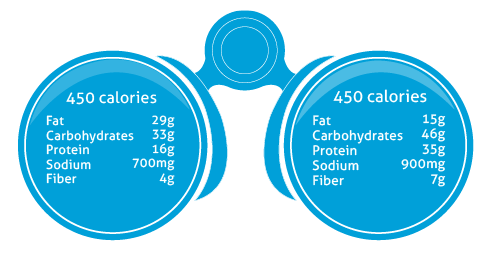 Additionally, simply knowing a calorie count, without details about the preparation, tells very little about the balance of the meal. When considering two 450-calorie items from a national restaurant chain, it would be natural to assume that these items are comparable and that either would be a good choice for a small meal. What consumers can’t tell from the calorie information alone is that one item contains 15 grams of fat while the other contains 29 grams (Fig. 1).
Additionally, simply knowing a calorie count, without details about the preparation, tells very little about the balance of the meal. When considering two 450-calorie items from a national restaurant chain, it would be natural to assume that these items are comparable and that either would be a good choice for a small meal. What consumers can’t tell from the calorie information alone is that one item contains 15 grams of fat while the other contains 29 grams (Fig. 1).
Similarly, when comparing more typically sized meals from the same restaurant chain, a 680 calorie and a 700 calorie entrée salad, one could easily conclude that either of these would make a good meal choice for someone on a 2,000 calorie-a-day regiment. What’s missing again is that the 700 calorie item contains 3.5 grams of saturated fat and 12 grams of fiber; whereas, the 680 calorie item contains 13 grams of saturated fat and only 4 grams of fiber. In this case, the calorie count belies the better-for-you choice.
Although these common scenarios may leave consumers lost, there is helpful change on the horizon. The increased transparency could eventually improve the availability of fresh, healthful menu options, as restaurants look to reformulate recipes and redesign menus. In addition to posting calorie information, the new federal law requires that supplemental nutritional information such as fat, carbs, and sodium be readily available in print to consumers who request it. And thankfully, there are many ways we can avoid the common pitfalls related to calorie information on menus.
Conquering the Calorie Counts
While the calorie count can provide generic guidance to consumers, the number alone provides limited insight and may not necessarily represent the quality and healthfulness of the ingredients.
Plus, regardless of calorie labeling regulations and mandates, establishments ultimately determine how their offerings are promoted and priced, and in turn, how consumers are presented with food choices and value.
When the cost to up-size the combo meal is small, the consumer is much less motivated to choose the standard-sized portion. This greatly reduces the power of calorie information to enable the healthy choice. Specials, promotions and value are influential factors in consumers’ decisions, which explains, in part, why posting calories does not impact restaurant revenue.
So what are consumers to do? With menu labeling being required of both fast food and full service establishments soon, there are many ways to make the calorie counts work for you:
Ask for Additional Information
This can be as simple as a question about the use of butter or oil in a menu item or as specific as requesting the detailed nutritional and ingredient information of menu items. Otherwise healthful sounding options like yogurt parfaits, oatmeal/granola and low-fat salad dressings can be loaded with sodium and processed, artificial ingredients. Additional insight into the nutritional content could help you make the wiser choice.
Rethink the Upsell
Mega-sizing, value-sizing or pricing specials can jeopardize the best of intentions. If upsizing your order, consider a few simple strategies that help offset the surplus portion:
Consider the Invisible Calories
Sometimes the “extras” are not included in the calorie information so it’s helpful to consider the fine print. For example, does the calorie count of your customizable sandwich include cheese, mayo and other calorically dense toppings? Does your salad’s calorie count include the dressing?
Beware of the “Calorie Range”
Posting a range of calories is common for combo, build-your-own and other customizable meals, making it challenging to gauge exactly where your choices fall on the calorie spectrum. The more variations and combinations available, the wider the range. An apple and unsweetened beverage as your choices can represent the low range of a combo meal’s calorie count, while fries and soda may round out the high end. Shared, customizable meals such as a pizza can be even more complicated, as it’s difficult to capture all of the possible combinations and provide useful calorie estimates. And even if all the variations are represented, portion control and therefore, total calories consumed, is still up to you.
Conclusion
The jury may still be out on the effectiveness of calorie postings, but these are several strategies that we can employ to most effectively use calorie information and select the best options. In the end, there is no substitute for informed choices on the part of the consumer. Asking questions about preparation, managing portion size and taking a moment to consider the quality of the ingredients are all crucial steps in choosing foods for improving one’s health.
About the USHC
The United States Healthful Council (www.ushfc.org) is doing just that – informing consumers, helping restaurants adopt best practices, taking into account the quality of menu ingredients and recognizing establishments for preparing, serving and promoting healthy food and beverage. Through the Responsible Epicurean and Agricultural Leadership (REAL) Certification program (www.eatreal.org), restaurants voluntarily undergo a review process that assesses menus, nutritional content, preparation methods and sourcing practices. In other words, restaurants that have earned REAL Certification can serve as a powerful guide for those seeking healthy options, helping consumers see beyond the calories.
About the Author
Eleni Papadopoulos is the Director of Business Development for the United States Healthful Food Council, a nonprofit nongovernment organization dedicated to fighting obesity and other diet-related diseases by increasing the consumption of healthful and sustainable food and beverages. The USHFC works towards its mission through the Responsible Epicurean and Agricultural Leadership (REAL) program, which assesses and certifies foodservice establishments based on their utilization of nutrition and sustainability best practices and serves as a beacon for consumers seeking healthier options.
by Sarah Muntel, RD Spring 2024 Spring has sprung, bringing sunnier and warmer days! For many, this…
Read ArticleDid you know that stress can have an impact on weight? Many people increase their food intake…
View VideoEating disorders can be a concern or question for many who are along the journey to improved…
View Video




